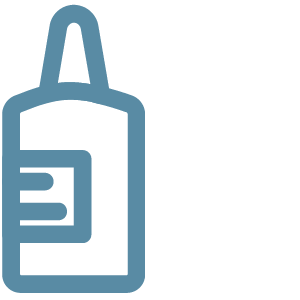
To break down and remove the outer layers of acne affected skin

Skin irritation, burns, scarring and changes to skin colour. Speak to your healthcare provider for full details

Causes skin sensitivity to sunlight. Speak to your healthcare provider for full details and other warnings
Chemical peels are a form of acne treatment that are available in private clinics. They use high concentrations of acid, often glycolic or salicylic, to break down the outer layers of skin.
Chemical peels are often carried out as a course of peels repeated every 4 to 6 weeks, depending on how deep into the skin the peel penetrates. Common concentrations of acid in chemical peels start at 15%.
Through the use of cosmetic acids, chemical peels shed the outer layers of skin to reveal a new layer of skin beneath, which is less affected and marked by acne.
The chemicals in chemical peels also work to break down acne-causing blockages of dead skin cells, oil and debris that have become trapped inside hair follicles.
Side effects of chemical peels include skin irritation, burns, scarring and changes to skin colour (pigmentation). Chemical peels for acne should only be conducted by a trusted professional who has had specific, recognised training in this treatment. You can find out more about this training at www.cosmeticstandards.org.uk.
Chemical peels can be fast acting and improvements in mild to moderate acne are often seen within the first few days following treatment. However, it may take time for chemical peels to provide the maximum benefit that they can offer and you may wish to complete a full course of peels (as determined by your healthcare provider) before deciding if the treatment has worked for you.
Chemical peels can be used as part of a wider acne treatment regime. These regimes involve using acne treatments and sometimes other products in an organised way with the aim of maximising the treatment’s effectiveness. It is important to remember that not all acne treatments can be used safely together and that you should seek the advice of your pharmacist or healthcare provider before starting or combining any treatments. Click here for an example of an acne treatment regime.
Please note that chemical peels are unlikely to be effective against severe acne. That is acne that consists of many lesions covering an area, with cysts and nodules being present, and is often scarring. If you have acne that has lasted for several weeks and is getting worse, is leaving scars or is affecting your mental health then you should arrange to visit your GP.